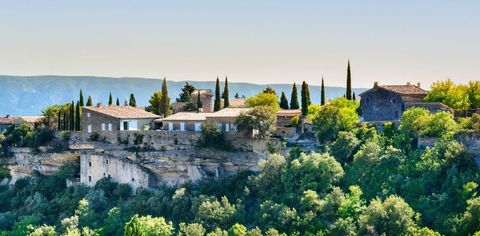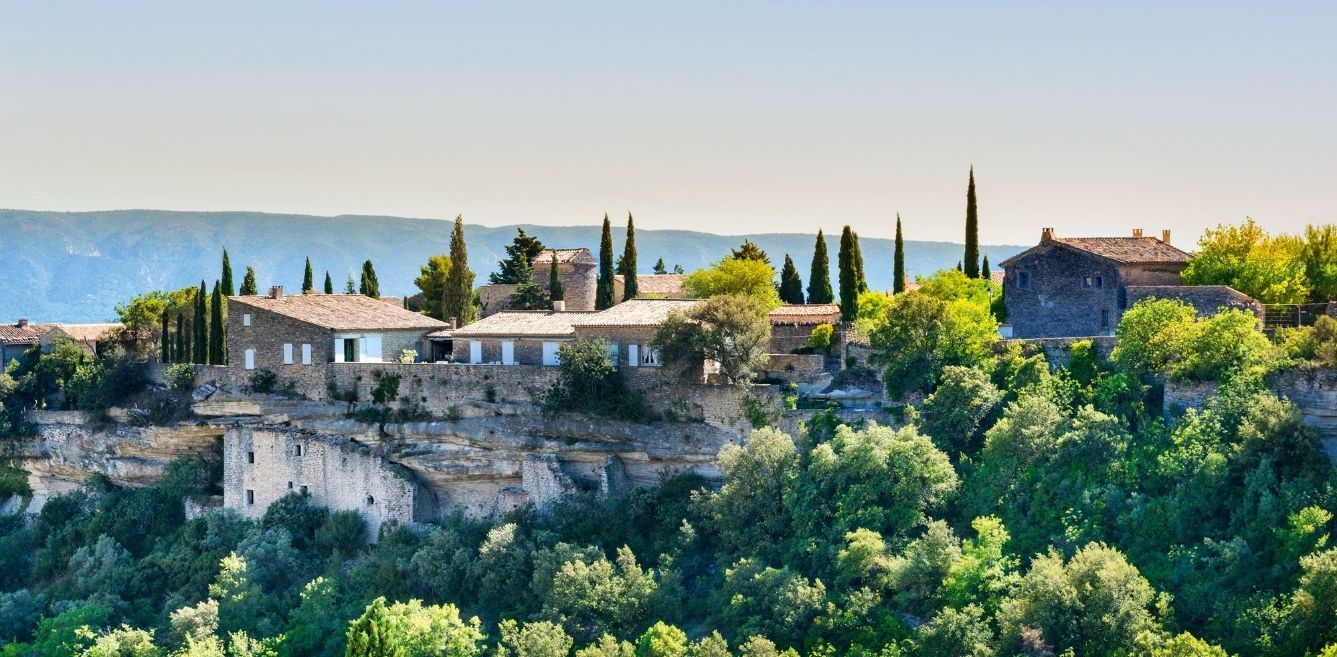
On a day trip from Cannes, our contributor samples the Southeast French region of Provence, taking in castles, wines, confectionery, and truffles along the way. By Kshipra Bhat
Cadenet is slowly waking up. A thick blanket of haze is steadily letting golden sunrays kiss the lush green fields. Undulating shades of gold sprawl over the swollen Durance River. On a chilly day in early December, I am driving through the tree-lined roads of Provence. My guide for the day, William Templer, who has been living in the region for more than a decade, is relieved that the sun is out, especially after the area endured torrential rains all of last week. I secretly feel lucky, too. The most awaited part of my trip to France wouldn’t have been possible without blessings from Helios.

I am on my way to Les Pastras, a traditional Pepin family vineyard spread over 11 hectares, situated in the hills between Cadenet and Lourmarin. The vast expanse of the farm features a two-storeyed Provençal country house with a fusion of traditional and modern details—pastel shades, stone floors, soft lines, wooden beams, and walls adorned with modern art. But my visit’s raison d’être is outside the cosy comforts of the country house. I’m here for a truffle hunt! Seated under an oak tree, along with a French and an American truffle enthusiast, I first gain insight into the differences among black, white, and summer truffles—and why they are called ‘diamonds of the kitchen’. Our flamboyant host, Johann Pepin, lets us in on the process of training dogs for truffle hunting. Pepin is not only running these truffle tours for connoisseurs and intrepid travellers, but he is also a torchbearer for preserving other French countryside traditions like mushroom foraging, grape stomping, and olive harvesting.

Soon, we find ourselves trailing a pair of dogs, one an expert hunter and the other a skilled digger. The sun is now shining bright over our heads. But there is a nip in the air. Suddenly, the hunter canine scrapes off the surface near an oak tree. The digger swiftly starts making inroads at that very spot, until the professional truffle hunter stops him and extracts our first treat of the day: a big black truffle. We score three in less than an hour and make a beeline for the backyard of the Pepin family house, which overlooks rolling green hills. With some homemade sparkling wine, we sample ultra-thin shavings of black truffles with toast and cow cheese, and wash down the intense buttery flavour with some truffle ice cream.

Next on our itinerary is a stroll through the fairy-tale village of Lourmarin, one of the Les Plus Beaux Villages de France. Once a quiet farming village, Lourmarin is now an emblematic Provençal destination. The first sight to catch my eye is the Château de Lourmarin, the very first Renaissance castle built in Provence—surrounded by the Louberon massif and facing the village. The quaint streets of the village are dotted with deciduous trees—a postcard of the French countryside if there ever was one. In the spirit of taking it slow, we set off on foot to explore the old part of the village. And what better way to discover an unknown culture than by tasting its local fare?

But we must wait for the clock to strike 3 pm for the boulangerie–pâtisserie of Stéphane Riquier, La Maison du Gibassier, to open. Meanwhile, I spend my time marvelling at the village and its history. The Romans settled here before being driven out by Saracen tribes in the early Middle Ages. But it wasn’t until the arrival of the powerful d’Agoult family in the 14th century that the village started to flourish. In the more recent past, writers like Henri Bosco, Albert Camus, and Peter Mayle (famous for A Year In Provence) gave in to the charms of this village. My reverie is broken by a heady aroma. The bakery has opened its doors. It is a quintessential French boulangerie with stone walls, curved arches, and stacks of brioche, tarte, and croquette varieties on display. I lay my hands on tuiles aux amandes—thin, crispy wafers studded with almonds—light on the stomach, but intense on my taste buds, and of course, le gibassier, a sweet bread flavoured with orange peel and spiced with anise. Traditionally, the gibassier was made on Christmas and New Year only. Post World War II, the dish gained so much popularity that the bakery owners decided to make it all year round. I walk to my next stop with the sweet notes of orange lingering on my tongue.

At Le Petit Lourmarin, an affable Frenchman greets us at the door. A chic establishment dedicated to art de vivre, it preserves a 1,000-year-old tradition of making fragrant wands. The wands are made of the finest lavender, cultivated and harvested by farmers in the region. The fragrant ornaments add aesthetic appeal to any event—weddings, birthdays, or festivals. “Crack open a fragrant wand, and you will be transported instantly to a lavender field,” says Monsieur Templer. I concur.
The Provençal landscape with its spectacular pastures and fall trees is pure geographical theatre. Featuring in this dramatic performance are a vineyard and bastide run by three generations of the Double family. The very Instagrammable 18th-century Château de Beaupré, located near Aix-en-Provence, was first acquired by the family in 1854, and the first vines were planted in 1890. As I enter the vineyard, a cool breeze greets me. I swirl, sniff, and sip a rosé, a pale pink wine with gentle spicy and smoky flavours. Low on acidity, the wine is the perfect accompaniment on a tour of the château.

Before heading to our final destination, we make a brief pit stop at an artisanal chocolatier: Puyricard. The swanky chocolate boutique woos visitors with fruit pastilles and dragées. I assemble an assorted box to take back home for my daughter. The nickname of Aix-en-Provence, ‘the city of a thousand fountains’, is a clear indication of its ancient water sources that were once loved by the Romans. The old town, Vieil Aix, hides cobbled alleys and historic squares, taking you back in time. It is centred around the boulevard of Cours Mirabeau. I pass cafes, shops, and grand 17th-century mansions that boast sculpted doorways and wroughtiron balconies. I’m on my way to visit the medieval Saint-Sauveur Cathedral, also called Aix Cathedral, on Rue Gaston-de- Saporta. Inside, I am awed by many things, but most of all by Nicolas Froment’s famous Burning Bush triptych, painted in oil on a wood panel in the 15th century and moved here in the 19th century.
It is late evening by the time I am at the Aix TGV station to catch a train to Cannes, my base in South France. I open my packed dinner of roasted chestnuts, commonly sold on the streets during winter, and a sticky madeleine that I grabbed in the old town. As I tuck into the meal, my mind wanders back to all the charms of Provence. I know I will be back, pursuing authentic experiences and sleuthing for stories.
GETTING THERE
Multiple international carriers fly from Mumbai and Delhi to Nice, from where you can take a connecting flight to Marseille. Aix-en-Provence is 50 minutes by train. Les Pastras is located between Cadenet and Lourmarin. Reserve a car/taxi/tour transfer in advance.
STAY
Le Moulin De Lourmarin is situated in the heart of Luberon, in the sublime village of Lourmarin. This 18th-century Provençal boutique hotel offers 17 rooms and two suites that marry old-world charm with modern comforts. The hotel offers easy access to village shops, restaurants, and art galleries.
EAT
At the foot of Château de Lourmarin, Le Numéro 9 is known for its romantic setting and excellent mix of Mediterranean and French cuisines.
Related: Tracing The Evolution Of Cognac: The French Town And The Spirit










